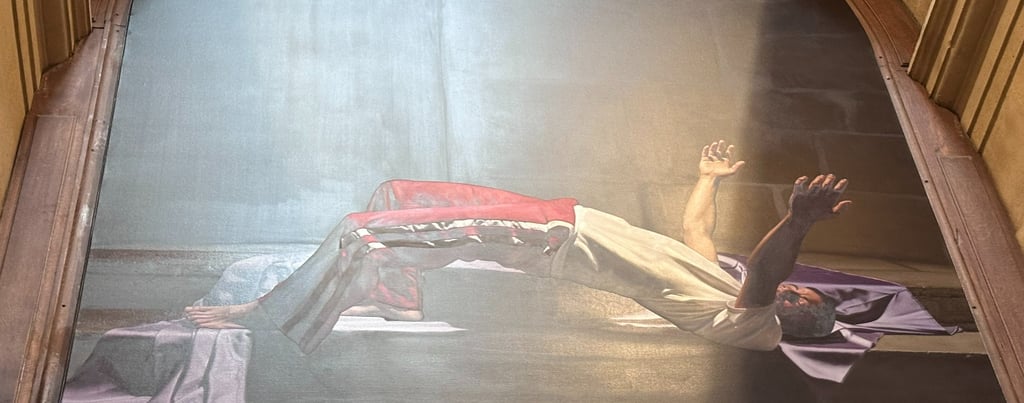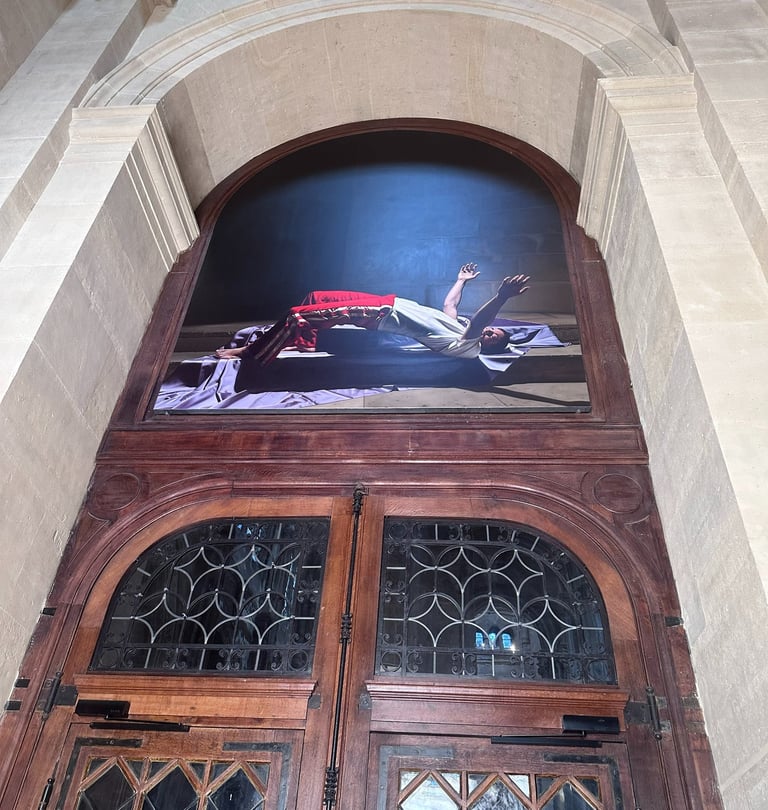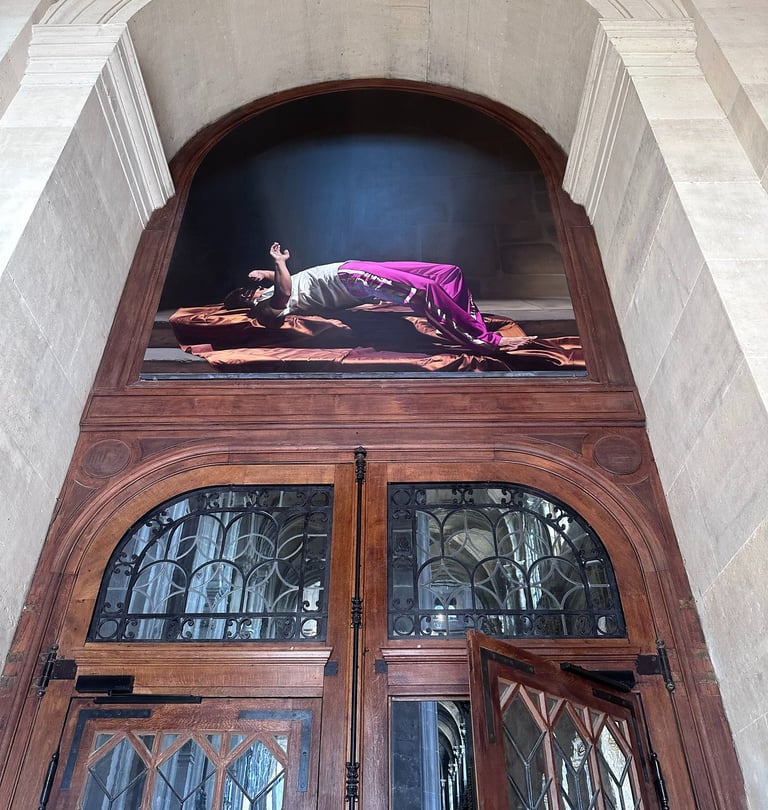Contemporary art and Church
ARTICLES
By LS
9/16/2025


Historically, the Church has played a significant role as a sponsor of the arts, commissioning religious artworks for its structures, including stained glass windows, frescoes, altarpieces, and various other decorations, all of which have influenced the aesthetics of its places of worship since the Renaissance. However, from the 19th century onward, especially with the rise of heritage conservation and the introduction of modern art, this relationship has experienced tension, with the Church at times appearing hesitant to accept contemporary art, often viewed as a departure from its traditional values.
In recent times, the relationship between the Church and contemporary art has seen substantial evolution, highlighted by a revitalized dialogue. Commissions for modern works in sacred spaces, such as the stained glass windows of Notre-Dame de Paris or the tapestries of Beauvais Cathedral, reflect a desire to reconnect with contemporary art while honoring the sanctity of these spaces. The organization of contemporary art exhibitions in churches, including Saint-Eustache and Saint-Merry in Paris, demonstrates that the Church is aiming to embrace modern artistic expression by adjusting its principles and finding a balance between heritage and innovation.
Since October 2024, L'église Saint-Eustache de Paris has showcased the diptych paintings by Paris-based, Algerian-born artist Dhewadi Hadjab (b.1992). This commission was made possible thanks to the generosity of the artist and Mennour Gallery.




Vestibule nord #1. Je tombai par terre et j'entedis une voix, 2024 Huile sur toile, 310 x 256 cm /Dhewadi Hadjab
Vestibule sud #2. Me voici, Seigneur!, 2024 Huile sur toile, 310 x 256 cm /Dhewadi Hadjab
In painting #1, a young man who had been plunged into darkness is blinded by a heavenly light and falls backwards, shielding his face with his hands. The painting captures the profound shock and emotional turmoil he experiences as he transitions from despair to a new reality. Painting #2: In a moment of surrender and profound recognition of his existence and purpose, he seems to communicate, 'Here I am, Lord!'.
Dhewadi Hadjab presents a contemporary version of the story of Saint Paul's conversion in two magnificent paintings, which are displayed prominently in the vestibules of the church's west façade. These works capture the aesthetic qualities of the time and resonate with spiritual undertones. The artist depicts the dramatic fall of Saul of Tarsus — the future Saint Paul — preceding his miraculous recovery after three days of blindness. At the end of this torturous period, he undergoes a transformation and experiences a divine revelation that leads him to convert (Acts of the Apostles). An admirer of Caravaggio (1571–1610), who was renowned for his masterful use of light and shadow, and inspired by the innovative choreography of Pina Bausch (1940–2009), Dhewadi Hadjab offers a nuanced, contemporary interpretation of this pivotal moment in the conversion story of Saint Paul, one of the most significant figures in Christianity. This poignant narrative is depicted in two striking paintings, often referred to as 'doorways' to deeper spiritual truths. They are displayed in each vestibule of the church's west façade. The artist skilfully captures the raising of Saint Paul. After his dramatic fall, caused by the dazzling appearance of Jesus while he was on his way to Damascus, Saul of Tarsus — the future Saint Paul — endured three days of blindness. This transformative experience is recounted in detail in chapter 9 of the Acts of the Apostles, which serves as a testament to the power of divine intervention. Tormented by the weight of his previous actions, the future Saint Paul comes to a profound understanding of the error of his plan to persecute Christians, renounces his former life, and rises again: when a heavenly voice calls him, he stretches out his arms to the sky to welcome his new mission, embracing his role as an apostle.
Employing photography as preparatory work and showcasing a masterful command of chiaroscuro, Hadjab treats this deeply philosophical subject in a hyperrealistic style that is characteristic of his deeply humanistic and universal art, in which the interplay between bodies and souls seems to waver between the physical and the divine. The use of contemporary clothing not only links the narrative to our era but also brings this age-old story closer to the viewer's understanding and empathy. This artistic choice anchors the work in the great tradition of historical and religious painting, bridging the gap between past and present, and allowing viewers to engage with this transformative moment in a deeply personal and reflective manner.
The inclution of contemporary art in churches serves not only as an aesthetic endeavour, but also as an effort to revitalise the religious message, making faith more approachable and stimulating reflection on humanity's role in today's world.
